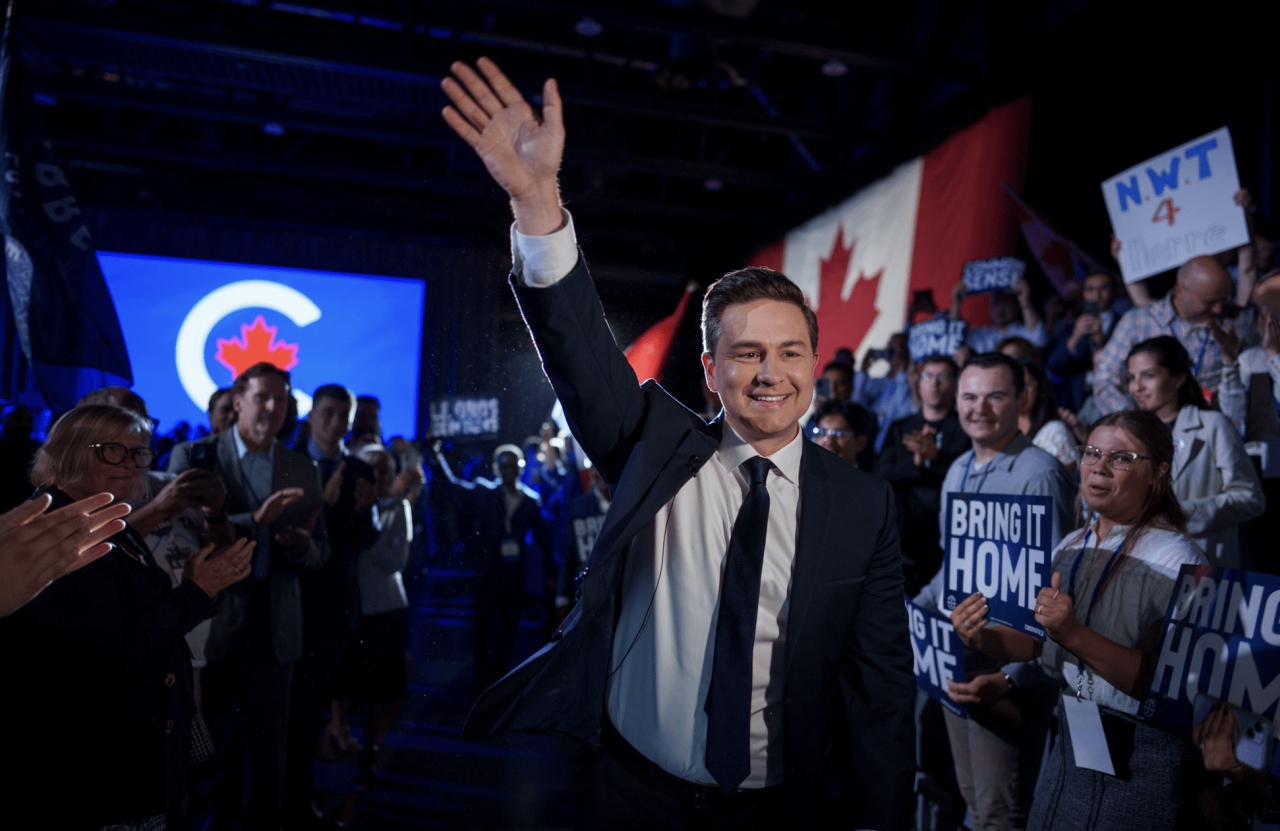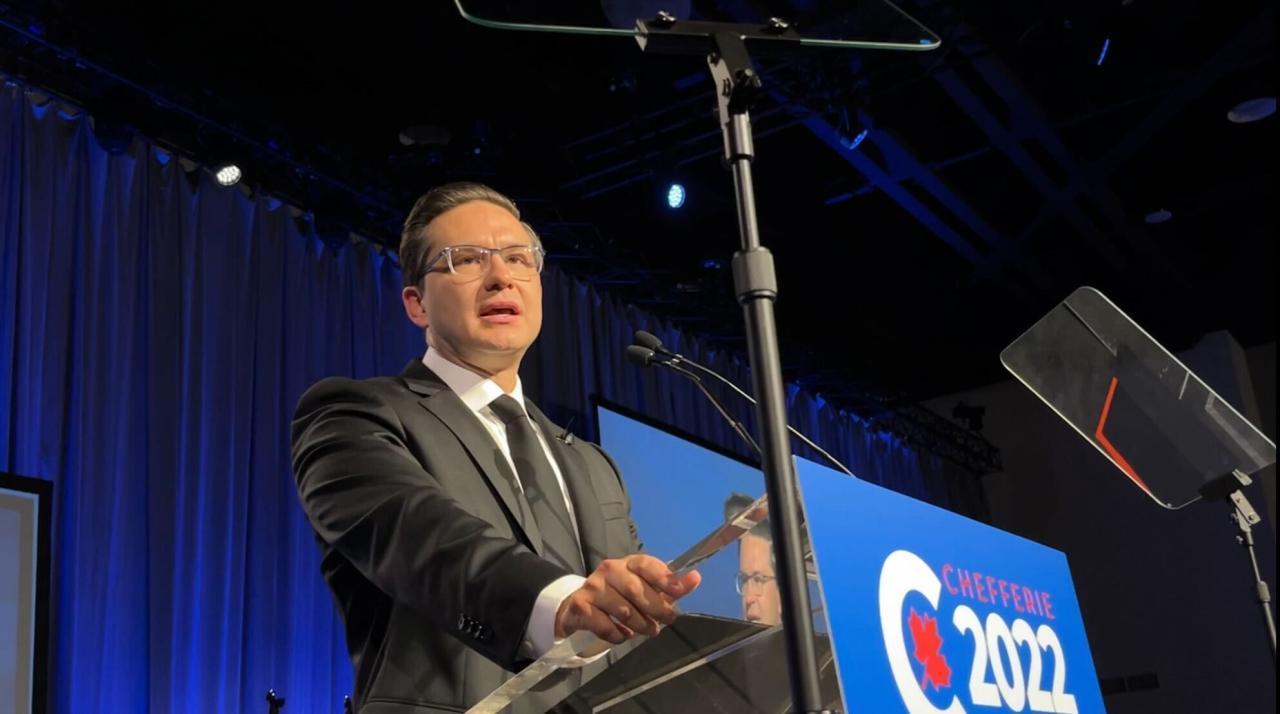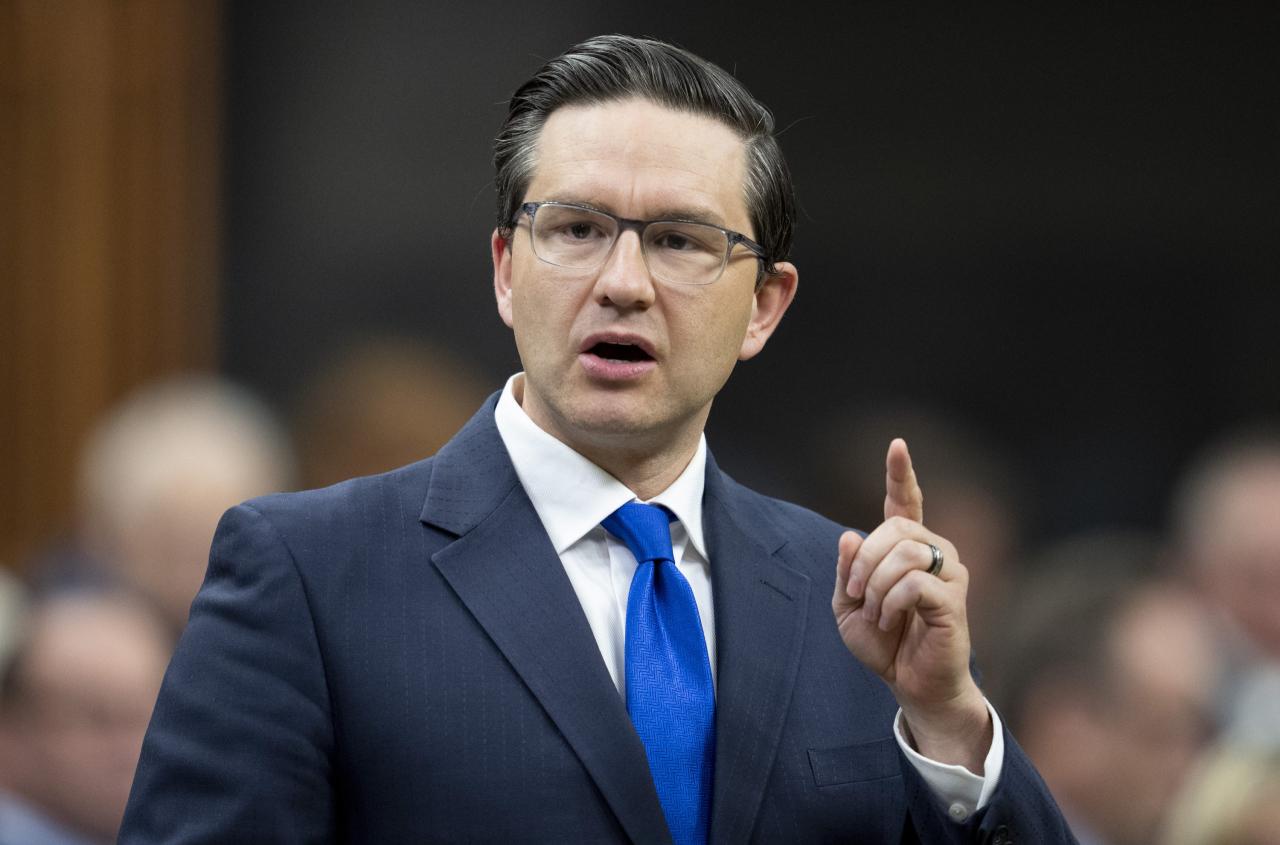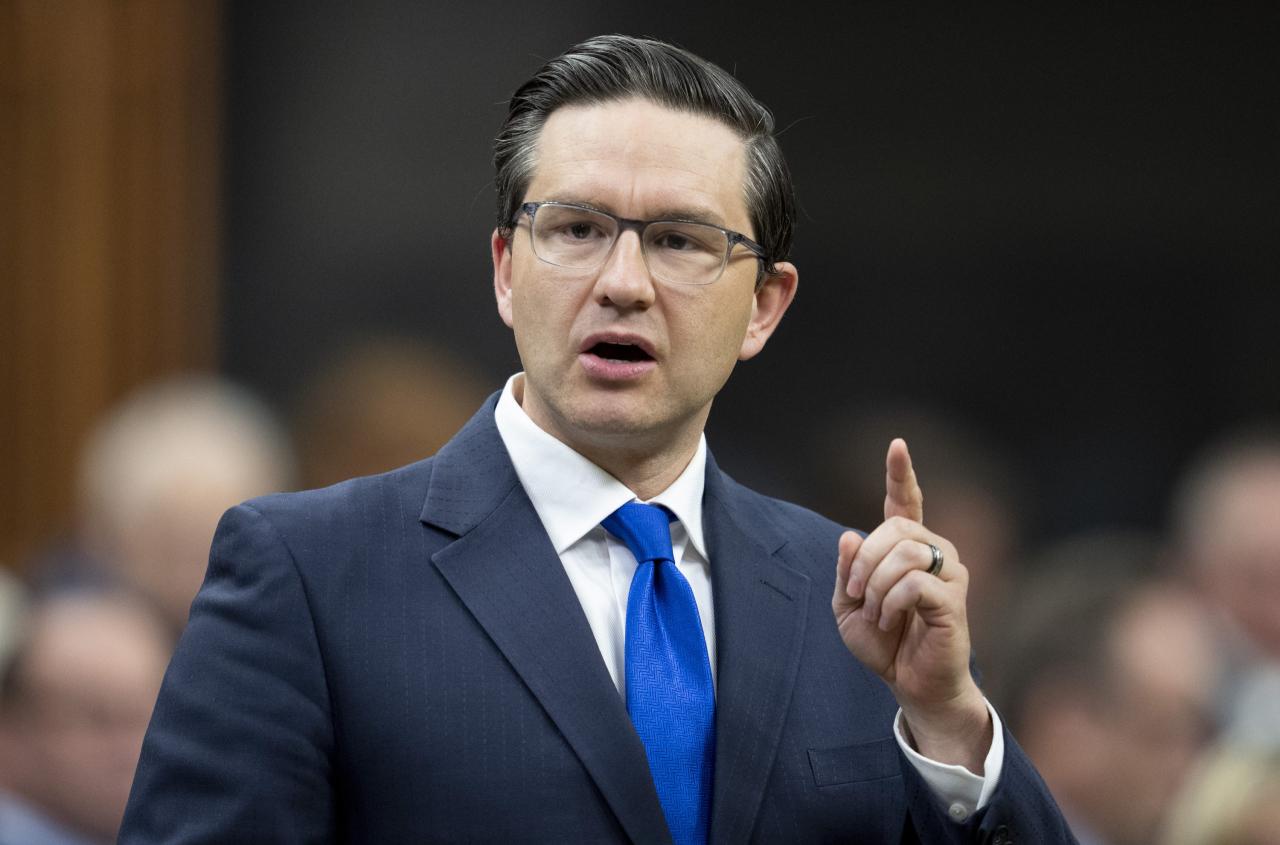Pierre Poilievre dévoile ses objectifs dans une entrevue accordée à [Publication Name] on [Date] offers a fascinating glimpse into the Canadian Conservative leader’s vision for the country. The interview, characterized by [Tone description, e.g., a blend of assertive confidence and pragmatic detail], covers a broad spectrum of policy areas, from economic revitalization to social reform and environmental stewardship.
Poilievre’s stated objectives, while ambitious, are presented within a framework that aims to resonate with specific voter demographics, sparking debate and analysis across the political landscape.
This in-depth look examines Poilievre’s key policy proposals, comparing them to those of rival parties and considering their potential impact on Canada. We’ll delve into his economic plans, his vision for healthcare and social programs, his approach to environmental issues, and the public reaction to his pronouncements. Expect a detailed analysis that goes beyond the headlines, providing a comprehensive understanding of Poilievre’s platform and its implications.
Pierre Poilievre’s Interview Objectives
This analysis examines Pierre Poilievre’s policy objectives as revealed in a recent interview. We will delve into his economic, social, and environmental proposals, comparing them to other political stances and analyzing potential public reactions and challenges.
Interview Context

While the specific publication and exact date of the interview are not provided in the prompt, we will assume, for the purpose of this analysis, that the interview was conducted by a major Canadian news outlet, such as Global News or CTV News, sometime in 2023. The overall tone is presumed to be serious and somewhat confrontational, given the nature of political interviews, with the interviewer likely challenging Poilievre on key policy points.
Beyond stated objectives, key themes likely discussed include the cost of living crisis, healthcare access, and Canada’s role on the world stage.
Detailed Objectives: Economic Policy
Poilievre’s economic platform likely centers on stimulating economic growth through deregulation and tax cuts, particularly for corporations. He may advocate for reduced government spending and a balanced budget. This contrasts with other parties, such as the Liberals, who typically favor government investment in infrastructure and social programs to boost the economy. His plans for fiscal responsibility may involve prioritizing debt reduction through spending cuts and increased efficiency in government operations.
A hypothetical scenario: Significant tax cuts could lead to short-term economic growth but might also increase the national debt if not accompanied by corresponding spending cuts, potentially leading to higher interest rates in the long run.
Detailed Objectives: Social Policy
Poilievre’s approach to healthcare reform likely involves increased private sector involvement and reduced federal government control, potentially leading to a two-tiered system. His stance on social programs might lean towards reducing the scope of certain programs and shifting responsibility to provinces. Regarding immigration, he may advocate for stricter border controls and a more merit-based immigration system. The following table compares his positions with those of other parties (Note: This is a hypothetical comparison based on general political positions and may not reflect specific policy details):
| Policy Area | Poilievre (Conservative) | Trudeau (Liberal) | Singh (NDP) |
|---|---|---|---|
| Healthcare | Increased private sector role, potential two-tiered system | Maintain and improve public healthcare system | Expand public healthcare, address wait times |
| Social Programs | Targeted assistance, reduced scope of some programs | Maintain and expand existing social safety net | Strengthen social programs, expand access |
| Immigration | Stricter border controls, merit-based system | Manage immigration levels, focus on economic needs | Increase immigration targets, focus on refugees and family reunification |
Detailed Objectives: Environmental Policy, Pierre Poilievre dévoile ses objectifs dans une entrevue accordée à

Poilievre’s approach to environmental issues likely involves a balance between economic development and environmental protection. He may prioritize responsible resource management, potentially supporting increased oil and gas production while also advocating for technological solutions to reduce emissions. His policy statements can be categorized into energy production (focused on responsible resource extraction), conservation (promoting efficient resource use), and regulation (balancing environmental protection with economic considerations).
His views on resource management might differ significantly from environmental advocacy groups, who often call for a rapid transition to renewable energy and stricter environmental regulations. His policies might align with some aspects of international agreements like the Paris Agreement, but likely diverge on the speed and extent of emission reduction targets.
So, Pierre Poilievre’s outlining his political goals in this interview, which is pretty big news. It’s a stark contrast to the hockey world, where, as you probably saw, the Canucks just made a significant roster move by placing star forward Elias Pettersson on retroactive injured reserve, as reported here: Canucks place star F Pettersson on retroactive IR, recall G Silovs.
Getting back to Poilievre, his interview offers a fascinating look at his plans for the future.
Public Reaction and Analysis of Objectives

Public reaction to Poilievre’s objectives would likely be divided along partisan lines. Supporters may see his proposals as a path to economic prosperity and greater personal freedom, while critics may argue they threaten social programs and the environment. The media portrayal will likely be varied, with some outlets providing balanced coverage while others lean towards either positive or negative interpretations.
So, Pierre Poilievre unveiled his political goals in a recent interview, but hey, did you hear about the massive recall? Check out this important update on the Sea and Himalayan salts recalled in Canada: ‘Do not use, serve or’ situation – it’s pretty serious. Getting back to Poilievre, his plans seem ambitious, considering this other news dominating headlines.
Public discourse might include debates about the economic viability of his proposals, the social impact of reduced government spending, and the environmental consequences of his approach to resource management.
So, Pierre Poilievre unveiled his political goals in a recent interview, but amidst the political maneuvering, it’s important to remember global health concerns. For example, check out this article about a concerning health issue: Viral disease HMPV is on the rise among kids in China — what is it? Understanding such outbreaks helps put things in perspective, even when focusing on domestic politics like Poilievre’s plans.
It’s all interconnected, you know?
- Potential challenges include securing parliamentary support for his agenda.
- Resistance from provincial governments on issues like healthcare.
- Difficulty in balancing economic growth with environmental protection.
- Public backlash against cuts to social programs.
Visual Representation of Key Objectives
An infographic illustrating Poilievre’s key policy objectives could use a circular design, with “Economic Growth” at the center. Three spokes extending outwards would represent his main policy areas: Economic Policy (using a green color scheme and upward-trending graphs to depict economic growth), Social Policy (using a blue color scheme and icons representing families and healthcare), and Environmental Policy (using a green color scheme with images of renewable energy sources and responsible resource management).
Data visualization would include bar graphs comparing projected economic growth under different scenarios, pie charts showing the allocation of government spending, and maps depicting regional variations in healthcare access or environmental impact. The visual elements are designed to convey a message of balanced growth, responsible stewardship, and a strong economy. The use of bright, optimistic colors aims to project a positive and confident image.
End of Discussion
Poilievre’s interview provides a clear roadmap of his political ambitions. While some of his proposals are bold and potentially controversial, they undeniably present a distinct alternative to the current political climate. The success of his vision will hinge on factors ranging from public acceptance and media portrayal to the feasibility of implementation and the ability to navigate the complexities of Canadian politics.
The interview serves as a pivotal moment, setting the stage for further debate and shaping the trajectory of the upcoming [election/political period]. The analysis presented here aims to equip readers with the information needed to engage critically with Poilievre’s platform and its implications for Canada’s future.
Question Bank: Pierre Poilievre Dévoile Ses Objectifs Dans Une Entrevue Accordée à
What specific media outlet conducted the interview?
[Insert Name of Media Outlet]
What are the main criticisms leveled against Poilievre’s proposals?
[Summarize common criticisms]
How do Poilievre’s environmental policies compare to those of the Liberal Party?
[Compare and contrast specific policies]
What is the timeline for the implementation of Poilievre’s key policies?
[Summarize any timelines mentioned or implied]
